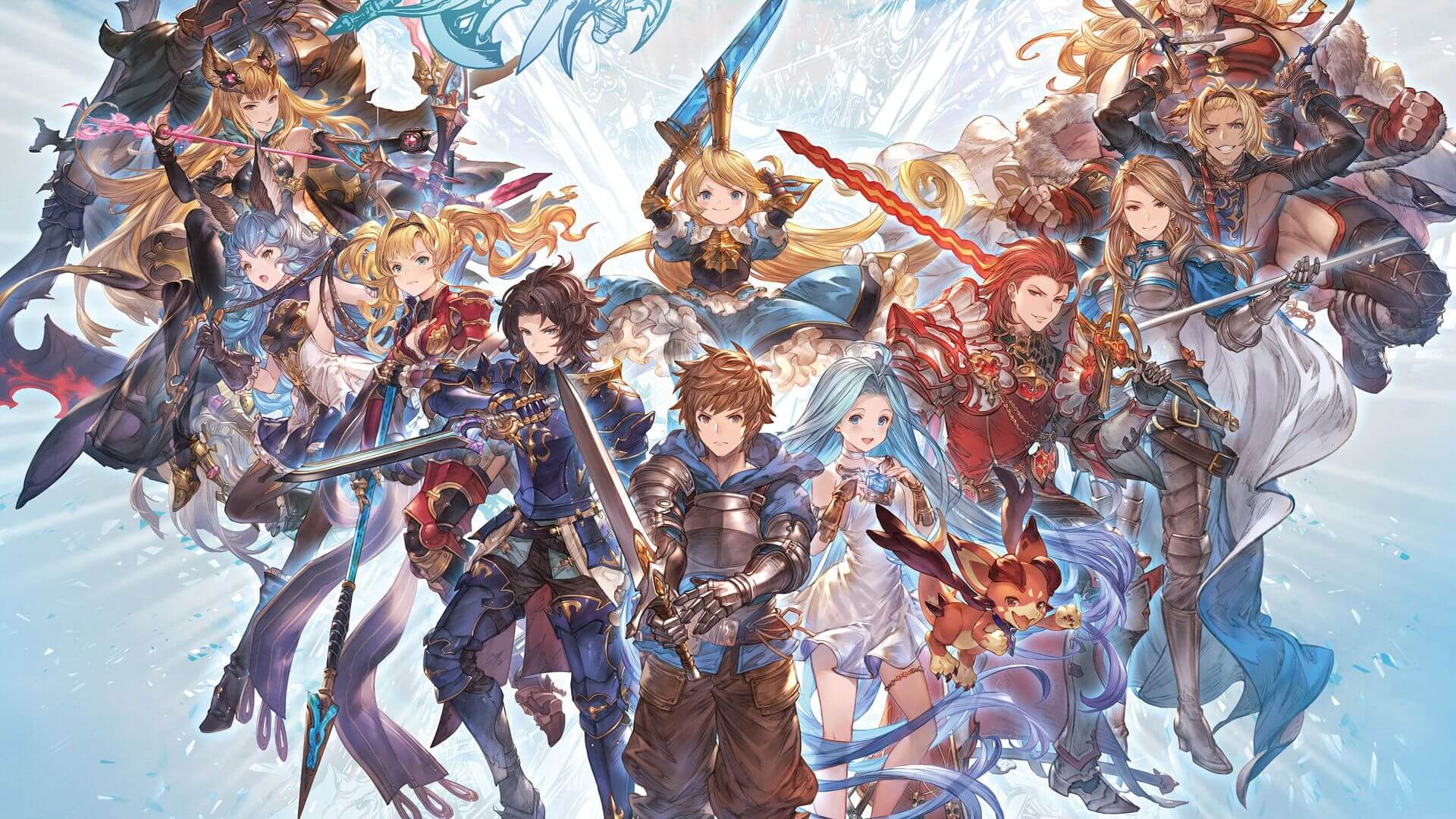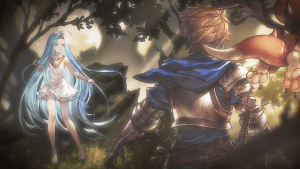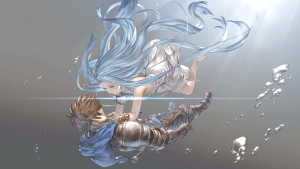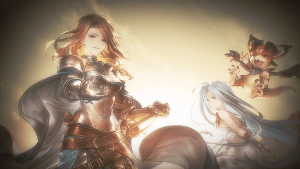
Granblue Fantasy: Versus (Review)
Since its initial release as a browser-based smartphone game in 2014, the Granblue Fantasy series has been on quite the journey. It’s managed to accumulate over 25 million downloads, and received a variety of unique spin-offs. From anime and manga, to artbooks and merchandise, the skyfarers have been making their presence known across the world through every possible media format. Now, with this leap into the land of fighting games, the franchise aims to reach an even wider audience.
Cygames has placed Arc System Works at the helm of development, with Marvelous Games publishing the release outside of Japan. Many are familiar with Arc System Works in the recent years through their ambitious plan of creating stunning 3D models with a 2D aesthetic in Guilty Gear Xrd. The success of this new style was later implemented in Dragon Ball FighterZ, and once again the team has refined this style even further with the release Granblue Fantasy: Versus.
Single Player
The world of RPG Mode
While Versus is meant to be your traditional fighting game, with slow-paced game-play shaped around fundamentals, a moment needs to be taken to appreciate just how much effort has been poured into the single player experience. Rather than tacking on a series of cut-scenes that lead into battle, they’ve gone all out essentially packing an entire RPG inside of a fighting game. RPG mode transforms the title it into a beat ’em up style adventure, complete with new enemies and a sense of progression. Upon starting it up, you’re thrown into a battle against soldiers that serves as a brief tutorial to teach you the basics. Immediately after this, you transition into a cinematic that sets up the narrative for your journey.
As Gran recalls the past, you’re familiarized with the story of the original mobile game. In an effort to save Lyria from confinement at the Erste Empire, Katalina, a lieutenant at the empire, forfeits her title to flee with her. During their escape, they encounter and receive assistance from Gran, but this ultimately results in him losing his life. Lyria saves him by linking her own life with his, marking the beginning of their adventures. However, for some reason Katalina and friends have now turned against them, and it’s your task to progress through the story in an attempt to restore things to normal.
As you jump through a series of locations, you take part in mission quests that generally boil down to defeating your enemy to advance. Many of the enemies on screen revolve around knights and monsters, which aren’t too interesting. However, as the enemies fill into the screen from both sides, your character can adjust their position from left to right, recreating that beat ’em up game-play. You’ll also get to experience a handful boss battles along the way, presenting some exciting challenges requiring a bit more strategy.
This leads us to the weapon customization and attributes in the form of the grid system. Similar to the mobile game, this allows players to set different weapons, with elemental attributes to counter your enemies. While you can try various setups to create your own custom grid, the game also offers an easy auto select for those who want a simple experience.
RPG mode isn’t all about taking down waves of enemies or setting the right weapons for the next boss. They’ve made sure to cram in a substantial amount of dialogue for players to enjoy. All scenes are presented in fully voiced visual novel-style interactions, adding an extra charm to the overall story. Even after you complete the mode, each DLC character comes with additional content, encouraging users to revisit the single player well into the game’s life.
As you progress, you’ll also receive tips and glossary entries that can be viewed every step of the way, so you’ll never be too confused if you’re new to the franchise. As an added bonus, If you happen to have a buddy nearby, they can jump in for a co-op session locally, or you can invite online friends. Overall, this is a great mode for fans of the series, and perhaps those who aren’t too interested in spending the bulk of their time competitively fighting others.
Offline
Gameplay
When this game was first revealed, there was some initial concerns as to how the game-play would turn out. Juggling accessible gameplay, while maintaining the depth you expect out of a traditional fighter is never an easy task. You won’t find 40 second combos that make your opponent set down the controller to watch your cut-scene of inputs, but the slower game-play and looming danger of corner pressure still manages to make the combat quite enjoyable.
The general format is constructed in a familiar one-on-one fighting style. Players have access to four inputs featuring: weak, medium, and heavy attack buttons, alongside a character specific action button. You’re also given accessible inputs that allow you to unleash special moves without any technical motions.
Perhaps the most unique feature in this combat lies in the cooldown skill system. Each character has access to four powerful skills that they can unleash during the match. However, depending on the strength of the version used, your time until you can use the move again will vary. Each command can be executed simply using the previously mentioned accessible inputs, but technical commands rewards you with shorter cooldowns. This feels like an attempt to both please long-time fighting game fans, while easing in new players and slowly encouraging them to utilize more difficult commands.
Despite praising the implementation of the cooldown system, it’s worth mentioning that it has the negative side affect of leaving your meter bar feeling somewhat useless. Outside of the occasional super move, your meter doesn’t have any other significant purpose.
Arcade
With the amount of content included in RPG mode, it’s not too surprising that you won’t find the typical time attack, high score, or survival modes that are often accompanied with fighting games. Luckily, we still have access to a classic arcade mode that not only lets you select your next opponent, but the cpu intensity on a per-match basis. While short, clearing a run to unlock the completion illustration is great, as there’s a handful of beautiful artwork that can be acquired in the gallery.
Training Modes
If you’re looking to brush up on your skills, or just learn the terminology for your actions, the practice modes are a wonderful starting point. There, you’ll find various training tools with tutorials and additional missions to help you memorize everything. You can run through combo practice to quickly understand a characters game-plan, or visit the “countermeasures” tab to help you deal with certain situations. A proper tutorial in a fighting game is always welcome, and it’s definitely a plus for Granblue Fantasy as some modern games today still choose not to include them.
Online
Before heading online, the game faces you off against computer opponents to make sure you’re ready for player/ranked matches. Once you clear that, you’ll have access to all the online functions. As with the Arc System Works tradition, entering a lobby is more than just viewing a list with player names. You can customise your avatar, send messages and stickers, and walk up to cabinets to set up your matches. This lobby system style is always a treat, as it recreates that classic arcade feel, minus the need for quarters. If you’re looking for a more competitive option, the game’s ranked mode lets you complete with others for a shot at the number one spot on the leader-board.
The Roster
Room for improvement
The biggest downside to this amazing title lies in the size of the launch roster. Though Beelzebub can be unlocked inside the game, being presented with just 11 fighters on the character select screen is somewhat disappointing. To Arc System Works’ credit, they’ve been in the fighting game business for some time now, so they still managed to create a diverse list of fighters. Even with this limited selection, you’ll find those staple shotos, rekkas, zoners etc, hopefully giving you someone that fits your play-style.
The team also seems committed to supporting the game with additional content, and at the rate of their current release schedule, the roster should fill out fairly soon. Though, whether that’s a plus or minus depends on your stance on DLC.
Closing
From Skybound Arts to opening character interactions, every kick, slash, and hit spark effect continues to impress with jaw dropping visuals. The amount of content in RPG mode is a refreshing change for a fighter, while the balance between accessibility and competitive game-play makes sure everyone can have fun regardless of skill levels. With new characters on the horizon and a balance patch shortly following, this game has the potential to become a truly exciting fighting series.
RPG Mode is a great concept
Unique cooldown system
Publisher: Marvelous Games
Developer: Cygames, Arc System Works
Release Date: 27th March 2020(EU)













